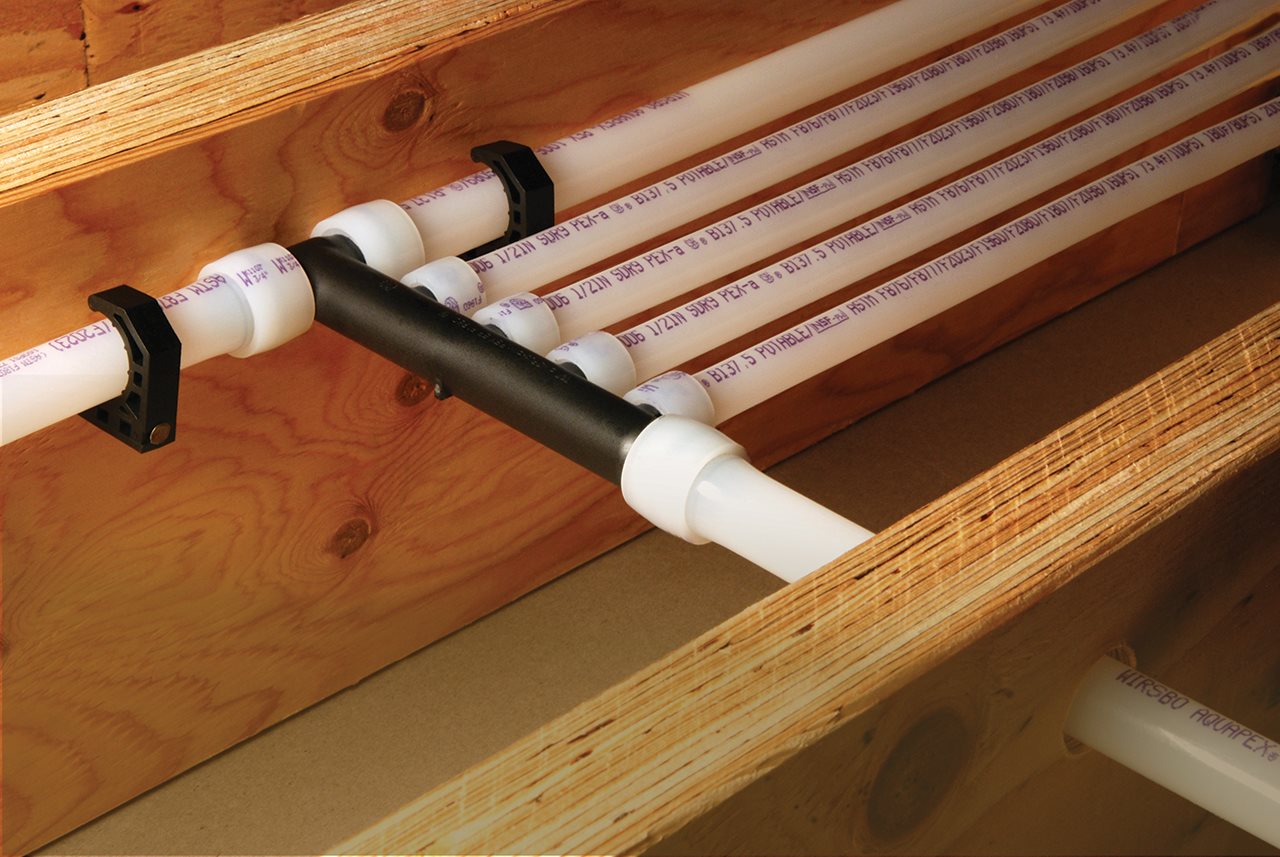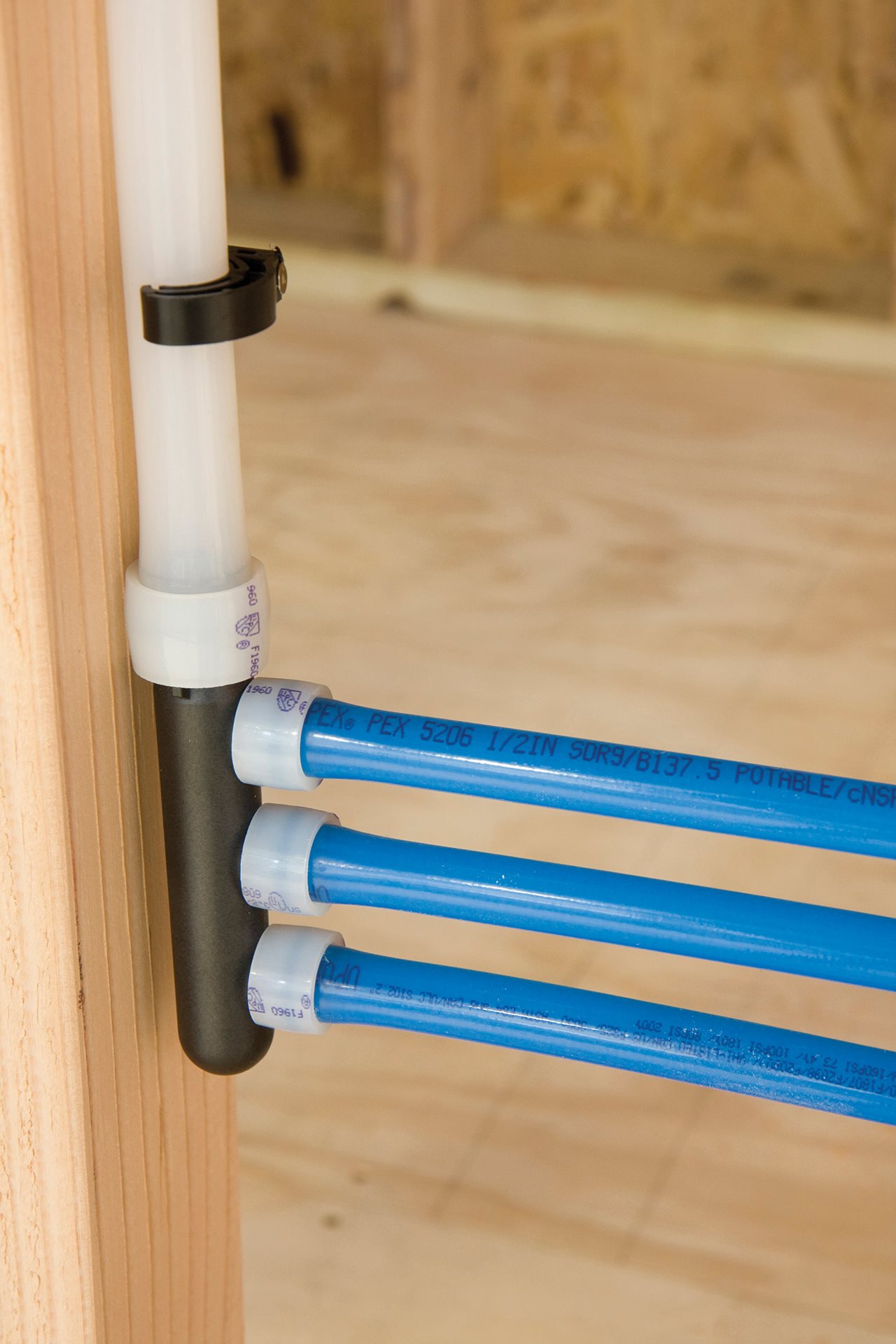(BPT) - From safety to sustainability to reliability, more homebuilders and homeowners are choosing PEX for their new home construction and repipes … here's why
With more than half of new home construction incorporating PEX for the plumbing systems - and even more in repipes - this flexible, polymer piping product is continuing to gain popularity among homebuilders and homeowners alike.
Find out what makes this piping system the trusted go-to solution for safe, clean, reliable plumbing that can last for a lifetime.
History
First developed in 1968 by German inventor Dr. Thomas Engel and incorporated into North America in the mid-1980s, PEX use has expanded over the decades from a radiant floor heating pipe to a plumbing and even a fire sprinkler system solution.

PEX is an acronym for polyethylene (PE) that is crosslinked (X). The crosslinking process bonds the polyethylene molecules to create a flexible yet strong material that provides various properties for a safer, cleaner, longer-lasting pipe. Its flexibility eliminates unnecessary connections behind walls, offering better performance for water delivery as well as an ideal solution for plumbing repipes.
Safety

Plumbing pipe has the responsibility of distributing water from the main source throughout the home to every fixture. When that water is running throughout all that piping, it has the potential to pick up various contaminants that have developed in the system.
For copper, which corrodes over time due to varying water pH levels, high dissolved oxygen, high total dissolved solids, high water velocity, various chemicals, and more, that corrosion creates opportunities for bacterial formation that can infiltrate your drinking water. In fact, the U.S. Environmental Protection Agency (EPA) states limits on allowable copper in drinking water in 40 CFR 141.80 and 141.86 due to its potential toxicity and leaching issues.
PEX, on the other hand, naturally resists corrosion, rust, pitting and scale buildup. It also has a smooth inner surface that does not promote bacterial formation. The piping is manufactured and tested to NSF/ANSI/CAN 61, Drinking Water System Components - Health Effects, which establishes minimum requirements for chemical contaminants and impurities indirectly imparted to drinking water from products, components and materials used in drinking water systems.
This standard tests for thousands of chemicals to ensure the safety of PEX for plumbing. In fact, according to a case study on the Environmental and Economic Life Cycle Assessment of PEX and Copper Plumbing Systems in the Journal of Cleaner Production, "Switching from copper piping to PEX piping improves human health impact substantially."
Sustainability

Studies indicate the carbon footprint of PEX is lower than copper when considering material extraction, processing and installation. The Journal of Cleaner Production states, "…energy and global warming potential reductions for PEX piping compared to copper piping (average for copper pipes types K, L and M) are 44% and 64%."
Additionally, the article goes on to state that "acidification potential, water intake, criteria air pollutants, smog formation potential, ozone depletion potential, ecological toxicity, and habitat alteration categories improve from 21% to 85% by electing PEX pipes over copper."
Furthermore, on a global level, a series of independent studies by the Flemish Institute for Technological Research measured the environmental footprint of various types of polymer pipes based on a full lifecycle assessment. The results proved PEX pipe manufacturing processes require less production energy than alternative materials.
Reliability

With a service life expectancy of at least 50 years, PEX is manufactured, tested and trusted to deliver quality and consistency.
PEX is the most resilient plumbing pipe in freeze/thaw cycles due to its flexibility and shape memory (i.e., the pipe's ability to expand and then shrink back down to its original shape).
In fact, a Technical Report (TR-52) published by the Plastics Pipe Institute (PPI) proves the exceptional resiliency of PEX pipe in freeze/thaw cycles. This flexibility and resilient strength help reduce the risk of system damage and costly repipes.
It is important to know that not all PEX is created equal. There are actually three methods for manufacturing PEX, known in the industry as PEX-a, PEX-b, and PEX-c, as well as various PEX connection methods. Make sure you understand the differences in PEX types and connection styles before making the decision to install PEX.

To learn more about PEX, refer to the industry resources from the Plastics Pipe Institute, the Plastic Pipe and Fittings Association, and uponor.com. Additionally, for a detailed look at all the benefits of PEX over copper, refer to this white paper on The Superiority of PEX Over Copper for Plumbing Systems.






